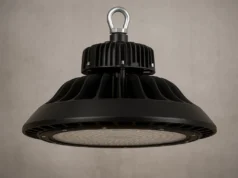A few years ago, a small bakery tucked in a quiet corner of town struggled to get noticed. It had great pastries and loyal regulars but not enough foot traffic. One advertising flyers, offering free coffee with any purchase. They handed them out at the farmers’ market, pinned a few in the local library, and tucked them inside book club newsletters—along with custom bookmarks, they printed a batch of warm, cheerful featuring seasonal recipes.
By Monday, they were sold out of muffins.
Print still works. When designed purposefully, flyers and bookmarks aren’t just paper—invitations, reminders, and connection points. Here’s how to design yours so people stop, read, and act.
1. Keep It Clear and Focused
The best flyers have one job—and they do it well. Before you start designing, ask: What’s the one thing I want someone to do after reading this flyer? Is it to visit your website, use a promo code, or attend an event? Once you know your goal, design everything around that message.
Do this:
- Use a bold, clear headline to draw attention
- Highlight one offer, event, or product—not multiple things
- Keep text short and easy to skim
- Leave white space to avoid clutter
Think of a flyer as a handshake—it’s the introduction, not the entire conversation.
2. Make Your Brand Instantly Recognizable
People should know it’s your flyer before they even read a word. Your brand’s personality should be woven into every part of the design, helping build recognition and trust over time.
Use:
- Your logo and brand colors
- Consistent fonts you use across your website or packaging
- Visuals that reflect your product, service, or tone
Even if the flyer ends up in a stack or pinned to a bulletin board, someone should be able to identify it at a glance. Brand consistency matters—especially for repeat visibility in local spaces.
3. Use High-Quality Images and Graphics
Low-resolution images are one of the fastest ways to make a flyer look rushed or unprofessional. Visuals carry your message as much as words, especially for advertising flyers to sell a product or promote an event.
If you’re promoting a product, use a crisp image of it. Include photos from past events or an image representing the experience if it’s an event. Custom icons or illustrations can add a clean, modern look for service-based businesses.
Design tip:
Images should be 300 DPI (dots per inch) for print. That ensures they stay sharp, even at larger sizes.
4. Use a Strong Call to Action (CTA)
What should your audience do next? That’s the job of your CTA.
Your call to action should be clear, easy to find, and impossible to ignore. Think about what would motivate your audience—and make it specific.
Examples:
- “Scan to book your free consultation.”
- “Show this flyer to get 15% off.”
- “Join us on June 5th – RSVP now.”
Place your CTA near the bottom of the flyer or in a bold box to draw the eye. QR codes work great here, too—especially for mobile users who want instant access to your offer or website.
5. Choose the Right Flyer Size and Layout
Flyers come in all shapes and sizes. The layout you choose should match the purpose of your campaign.
Popular flyer sizes:
- 4” x 6” postcards – Perfect for handouts and mailers
- 5.5” x 8.5” half-sheets – Ideal for quick promotions and in-store inserts
- 8.5” x 11” full-page – Great for event posters and product showcases
A horizontal layout might feel more modern, while a vertical one works well for traditional promotions. You can also print double-sided to maximize space without adding clutter.
If you’re handing out flyers at events or packaging them with giveaways, consider pairing them with custom bookmarks—a small, branded print piece that lasts longer and adds value.
6. Print Sustainably (And Smartly)
The design doesn’t end when you hit “print.” Choosing how your flyer is printed—and what it’s printed on—is just as important.
EnvironPrint offers eco-friendly flyer printing using water-based inks, recyclable materials, and low-waste processes. That means your brand message will appear beautifully without having an excess impact on the planet.
Tips for smarter printing:
- Choose recycled or FSC-certified paper stock
- Use matte or satin finishes for a modern, soft-touch look
- Print in bulk when possible to reduce shipping and packaging waste
- Bundle flyers with other items like stickers or bookmarks to build a full kit
The flyer might be the first impression—but smart printing ensures it’s a responsible one too.
Final Thoughts
A well-designed flyer doesn’t need to be flashy or complex. It just needs to be clear, consistent, and created with purpose. When your flyer communicates one strong message, reflects your brand, and offers something useful—it works.
When you print it sustainably, package it thoughtfully, and pair it with creative pieces like custom bookmarks, it becomes more than an ad—it becomes part of the experience.
Need help designing or printing your next set of advertising flyers? Explore EnvironPrint’s eco-conscious options and bring your ideas to life—with a print that stands out, lasts longer, and feels good to share.








